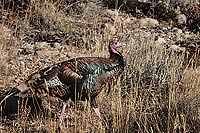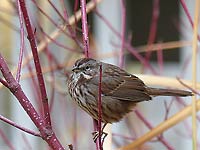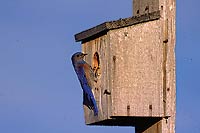If you like birds, birdwatch casually or continually, or just want to share the day outside with friendly Moabites, then the Moab Christmas Bird Count is for you. Better known as the CBC, the count takes place Saturday, December 14, 2019. This event is really “for the birds.”
When asked why people would do this, count compiler Marcy Hafner responded, “It’s the drama of the Christmas Bird Count, an event that for dedicated birders is comparable to the Super Bowl. It’s the opportunity to see birds that come to this area only in the winter, such as the ferruginous hawk, rough-legged hawk and bald eagle.”
 The annual event which is coordinated by the National Audubon Society contributes to a larger citizen science project which provides a snapshot of wintering bird populations across much of North America and other parts of the world. This year marks the 119th annual undertaking of the CBC which started in 1900 by a small group of birders and conservationists who were concerned about the welfare of wildlife in America.
The annual event which is coordinated by the National Audubon Society contributes to a larger citizen science project which provides a snapshot of wintering bird populations across much of North America and other parts of the world. This year marks the 119th annual undertaking of the CBC which started in 1900 by a small group of birders and conservationists who were concerned about the welfare of wildlife in America.
On Christmas Day 1900, ornithologist Frank Chapman, an officer of the fledgling National Audubon Society, proposed a new holiday activity. Instead of shooting birds, people would go outside, identify and count the birds. The Christmas Bird Count was born. That first year, 27 birders participated in 25 counts scattered across North America, including Pacific Grove, California; Germantown, Pennsylvania; Bristol, Connecticut; and Toronto, Ontario. A total of 89 species were observed that year.
 Fast forward to the summary of the 118th annual count. The 2,585 Christmas Bird Counts submitted represented the highest number of counts in the CBC’s history. Nearly 2,000 counts were in the US, while the rest were from Canada (463) and Latin America (165). The total number of participants was 76,987, although some people join in on multiple counts. A staggering 666 species of birds were recorded in the US, alone.
Fast forward to the summary of the 118th annual count. The 2,585 Christmas Bird Counts submitted represented the highest number of counts in the CBC’s history. Nearly 2,000 counts were in the US, while the rest were from Canada (463) and Latin America (165). The total number of participants was 76,987, although some people join in on multiple counts. A staggering 666 species of birds were recorded in the US, alone.
Compiler Marcy Hafner encourages interested individuals to contact her prior to count day. She assigns individuals to teams to cover specific zones within the count’s 15-mile diameter count circle. The goal is to get good, in-depth coverage of each zone and tally the species and numbers of birds observed. She’ll pair beginners with seasoned birders, so all are welcome.
 Last year, 58 participants counted 74 species. Red-tailed hawks, golden eagles, Canada geese, western bluebirds, black-billed magpies, and pine siskins were some of the birds recorded along with single sightings of greater roadrunner, Lincoln’s sparrow, and Clark’s nutcracker.
Last year, 58 participants counted 74 species. Red-tailed hawks, golden eagles, Canada geese, western bluebirds, black-billed magpies, and pine siskins were some of the birds recorded along with single sightings of greater roadrunner, Lincoln’s sparrow, and Clark’s nutcracker.
There is also a three-day period pre- and post-count day called count week. Birds observed during this week are recorded just at the individual level. The idea with count week is to either capture species while scouting for count day or to try and locate species that might be present but were missed on count day. All in all, it’s a pretty good excuse to go birding for a week.
“Winter is a good time to start a lifelong journey of discovering the mystery and wonder of birds,” said Hafner. “So, when the holiday season rolls around and you want to add some extra spice to that festive time of year, come on out and take part in the Christmas Bird Count.” Good birding!
To participate, contact Marcy Hafner at marcymoab@yahoo.com or 435-259-6197. A potluck breakfast wrap-up is scheduled for Sunday, December 15 at The Nature Conservancy office, 820 W. Kane Boulevard at 10 a.m.